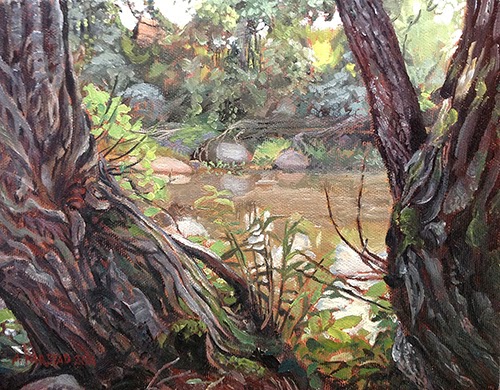12 August finds me on Thatch Island in the Grand Lake Protected Natural Area along the north shore of the Saint John River near Gagetown, New Brunswick. The meadows and marshes are glowing in the sun against the shady rows of trees that line the channels, and Kim Stubbs, the other Bio-blitz artist and I are setting up to paint riverine scenes. The sun is hot on Goldenrod, Evening Primrose, Angelica, and mints among the grasses around the cove where our boat is moored. The shade cast by the Silver Maples along the north shore's narrow channel is inviting as I try to find an exciting angle on the peaceful scene. Kim has her first painting half finished before I find the excitement I want - combining a distant scene with a botanical study. Bumblebees and Honeybees visit the bright flowers of the small compact panicles of Swamp Loosestrife bloom, at head height for me as I sit beneath my sunshade. An Osprey







